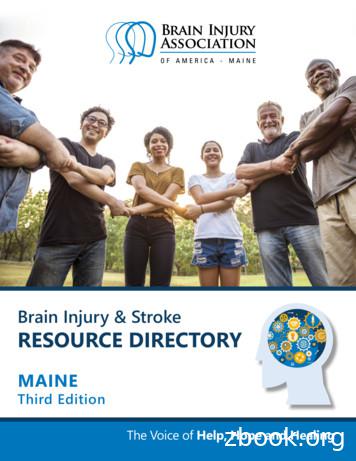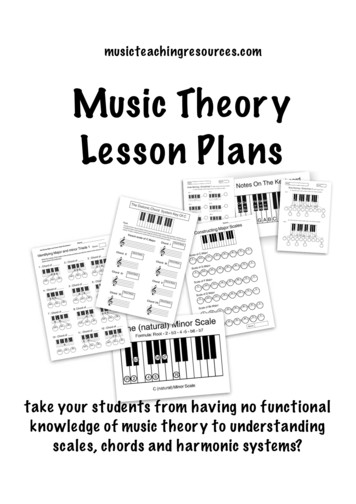Anoxic Brain Injury - McGovern Medical School
Anoxic Brain InjuryDaniel Abramson, MS416 September 2020RAD 4001 Diagnostic RadiologyMaria Patino, MD
Clinical History49yo male with history of quadriplegia, several c-spine injuries 2/2MVC in 1/2020 (s/p fusion, laminectomy), neurogenic bladder (foley atbaseline) admitted with chief complaint of “indwelling catheter is nothaving output since last night.” Found to have UTI, foley exchanged, treated with ceftriaxone Began AMS workup on day 5 Likely not metabolic, seizure Infection w/u ongoing, including LP Thought to be 2/2 to baclofen withdrawalMcGovern Medical School
Clinical HistoryDay 9 – unresponsive after returning from LP Found to have PEA, code blue called ROSC after 7 minutesMcGovern Medical School
Clinical History Vitals: hr 85, RR 20, SpO2 98 (intubated)Tmax 93.7 (Tmax 100.9), bp 87/59 General: sedated, on hypothermiaprotocol Neck: decreased ROM Chest: intubated, chest tube in place CV: tachycardic, normotensive onpressors Abd: soft, nondistended Skin: no rashes Neuro Mentation: sedated, notfollowing commands CN: 3mm PERRLA,dysconjugate gaze, nottracking, flattening of Lnasolabial fold Motor: thin bulk, spasticitythroughout, no mvmt of U/Les Sensation: grossly intact tolight touch Coordination: could not assess Gait: deferred
Clinical 42.9Ph 8.2Ca 10.5Mg 2.0NH3 30.0Lactic Acid 9.8TSH 4.27 Day 9 CSF (before event, notsedated): Glc 50, Ptn 68, RBC 4,WBC 3, OP 31, negative GS EEG with slowing, noepileptiform discharges Day 5 CTH: no acute abnormality Day 9 MRI (before event): noacute abnormality; chronic Rcerebellar hemorrhagic infarct
Clinical HistoryTransferred to CCUPressors as neededCXR: R tension pneumothorax, chest tube placedEmpiric antibiotics for possible meningitisHypothermia protocol initiatedStat CT brain without contrastMcGovern Medical School
Frontal lobeGenu of corpuscallosumCaudatenucleusAnteriorhorn oflateralventricleAnterior limb ofinternal capsuleAnteriorhorn oflateralventricleLenticulatenucleusPosteriorhorn oflateralventricleThalamusStraight sinusCase courtesy of Assoc Prof Frank Gaillard, Radiopaedia.org, rID: 37008OccipitallobeMcGovern Medical SchoolPosteriorhorn oflateralventricle
Frontal LobeCaudatenucleusLateralventricleParietal lobeCase courtesy of Assoc Prof Frank Gaillard, Radiopaedia.org, rID: 37008Superiorsagittal sinusMcGovern Medical School
Frontal lobeCentralsulcusParietal lobeSuperiorsagittal sinusCase courtesy of Dr Derek Smith, Radiopaedia.org, rID: 46232McGovern Medical School
Summary of imaging findings Loss of gray/white matter interface in both cerebral hemispheres Symmetric hypodensity in basal ganglia and thalami bilaterally Cerebral edema, effacement of cisterns, sulciMcGovern Medical School
Differential Diagnosis Anoxic Brain Injury Ischemic Stroke Traumatic Brain InjuryMcGovern Medical School
Discussion Pathophysiology of Anoxic Brain injury Primary injury: neuronal death due to ischemia Secondary injury: neuronal death due to imbalance of cerebral oxygendelivery and use – metabolically active tissue hit hardest (e.g. basal ganglia) Common sequela of cardiac arrest Management is supportiveMcGovern Medical School
Discussion Cerebral metabolism is reduced by 5-10% / 1 C decrease Hypothermia decreased metabolic demand decreased CO2 production decreased O2 consumption decreased lactate production mitigates inflammation, apoptosis Goal temperature: 32-34 C, 24-48hrsMcGovern Medical School
Outcome Patient’s neurologic function continued to deteriorate Nuclear cerebral perfusion scan performedMcGovern Medical School
Source: Al-Shammri S, Al-Feeli M. Confirmation of Brain Death Using BrainRadionuclide Perfusion Imaging Technique. Med Princ Pract. 2004; 13:267272.McGovern Medical School
Final Diagnosis Anoxic brain injury Brain DeathMcGovern Medical School
Imaging modalities and cost Modalities of choice: CT brain w/o contrast /- MRI w/o contrast (headtrauma from acute injury, with neurologic deterioration) Brain death determination – clinical /- ancillary studies (such as cerebral perfusion) Imaging for case: CT brain without contrast x2, Nuclear cerebral perfusion Estimated to be 4200 Parameters: without insurance, in AZ CT brain without contrast 1213 Nuclear cerebral perfusion scan 1800 (used heart SPECT scan as proxy) Source: services-andproceduresMcGovern Medical School
Take Home Points / Teaching points Anoxic brain injury is a commonsequela of cardiac arrest Common brain CT findings include lossof gray-white matter interface andhypoattenuation of basal ganglia andthalami Therapeutic hypothermia can mitigatesecondary injuryMcGovern Medical School
References1. Al-Shammri S, Al-Feeli M. Confirmation of Brain Death Using BrainRadionuclide Perfusion Imaging Technique. Med Princ Pract. 2004;13:267-272.2. Lacerte M, Hays Shapshak A, Mesfin FB. Hypoxic Brain Injury. [Updated2020 Aug 12]. In: StatPearls [Internet]. Treasure Island (FL): StatPearlsPublishing; 2020 Jan-. Available 3. Sekhon, M.S., Ainslie, P.N. & Griesdale, D.E. Clinical pathophysiology ofhypoxic ischemic brain injury after cardiac arrest: a “two-hit” model. CritCare 21, 90 (2017). https://doi.org/10.1186/s13054-017-1670-94. Greer DM, Shemie SD, Lewis A, et al. Determination of BrainDeath/Death by Neurologic Criteria: The World Brain DeathProject. JAMA. 2020;324(11):1078–1097. doi:10.1001/jama.2020.11586McGovern Medical School
Questions?
McGovern Medical School Imaging modalities and cost Modalities of choice: CT brain w/o contrast /- MRI w/o contrast (head trauma from acute injury, with neurologic deterioration) Brain death determination –clinical /- ancillary studies (such as cerebral perfusion) Imaging for case: CT brain without contrast x2, Nuclear cerebral .
Jun 10, 2020 · Rosa Parks Elementary. Option A. Edison Edison (68)/McGovern (135) Edison (130)/McGovern (166) Patrick Henry McGovern McGovern(143)/Whittier (14) Patrick Henry Edison Memorial Memorial Memorial Ben Reifel Ben Reifel (244)/Patrick Henry (144) Patrick Henry Whittier (75)/Ben Reifel (215) Whittier Whittier .
Brain Injury: AGuide for School Nurses Brain Injury Association of New Jersey, Inc. 1090 King George Post Road #708, Edison, NJ 08837-3722 (732) 738-1002 Brain Injury Association of New Jersey, Inc. Brain Injury: A Guide for School Nurses This publication is a project of the Children and Adolescents Committee, formerly known as the
The Brain Injury Association of America, Inc. (BIAA) is the country’s oldest and largest nationwide brain injury advocacy organization. As the voice of brain injury, BIAA works to advance awareness, research, treatment, and education to improve the quality of life for all people affected by brain injury.
For brain injury information and resource information, contact BIAA’s Maine Brain Injury Information Center: (800) 444-6443 Monday to Friday, 9 a.m. to 5 p.m. E-mail: MaineBrainInjuryInfo@biausa.org The Brain Injury Association of America, Inc. (BIAA) is the country’s oldest and largest nationwide brain injury advocacy organization.
What Everyone Should Know About Brain Injury.” Missouri Head Injury Guide for “ People Interested in Traumatic Brain Injury. 2001. Missouri Head Injury Advisory Council and Missouri Department of Health. Traumatic Brain Injury-Related Hospital Discharges, Results from a 14 State Surveillance “ System, 1997.”
Acquired Brain Injury (ABI). Trauma, stroke, aneurysm, loss of oxygen to the brain (caused by heart attack, near drowning, suffocation, etc.), infectious disease and toxic exposure are some of the causes of ABI. Traumatic Brain Injury A Traumatic Brain Injury (TBI) is a form of acquired brain injury that results
*John P. McGovern, MD Foundation, December 10, 2015, Erwin CJ, Proposal for funding of the John P. and Katherine G. McGovern Center for Ethics, 3,000,000 (Total Amount). (Not Funded) *John P. McGovern, MD Foundation, December 2015, Erwin CJ, Proposal for permanent funding of the Medical Humanities
Introductory Music Lesson Plan s r 1: To make students aware that notes have "names" 2: To develop the ability to identify any "natural" note with reference to a piano keyboard






















